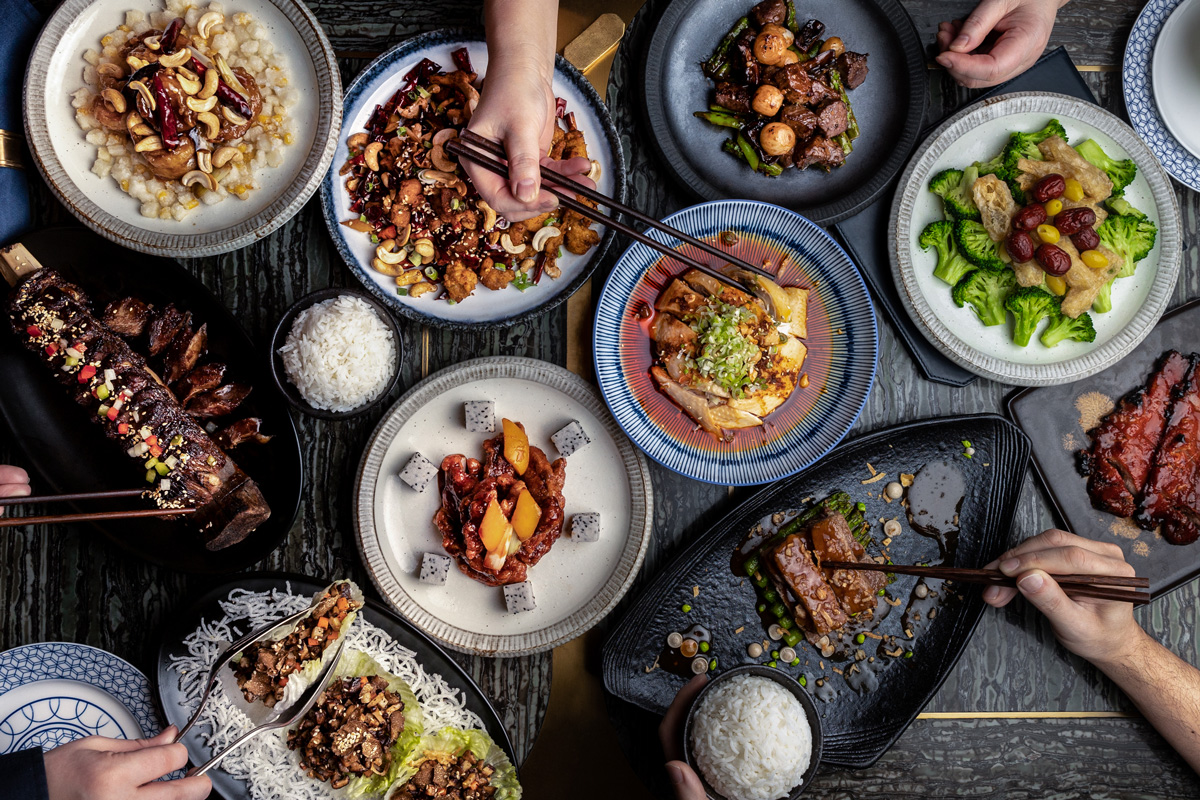
Wine Culture Magazine

At Mott 32, wine director Robert Stelmachuk likes to offer unusual pairings, like this Agiorgitiko, a plummy, spicy, medium-to-full-bodied red from Greece. Leila Kwok photo
Until 2016, sommelier Robert Stelmachuk had spent most of his career pairing wine with French, Italian, Belgian and Spanish food—not Chinese. So when he joined Vancouver’s Mott 32 as wine director, the first thing he did was head straight to Hong Kong.
His goal was to learn the style of service demanded of the luxurious destination restaurant in the city where it first opened, back in 2014, “and work with chefs and the culinary team to understand the food; to really take it apart and then apply what I knew about wine at that point,” says Stelmachuk, who is a member of the Court of Master Sommeliers and Vancouver magazine’s Sommelier of the Year 2020.
“For me it was exciting because [in particular] the character of umami was something that I hadn’t had a chance to play with and to explore,” he adds. “I spent time trying all the dishes, tasting everything, understanding textures, different spice levels and different temperatures.”
Living as we do here on the Pacific Rim, British Columbians are accustomed to dining on Thai curries, Japanese sushi and all the diverse noodles, dumplings, barbecued meats and stir fries of Chinese cuisine. But pairing wine with these dishes presents exciting—and sometimes surprising—challenges and opportunities. Here is how three Vancouver experts do it.

A variety of dishes at Mott 32: When all these different tastes are presented at once it creates a special challenge—
and opportunity—for pairing wine. Leila Kwok photo
With a region as vast and varied as Asia, it’s impossible to describe its myriad cuisines with just a few adjectives. But there are two distinctive tastes that differentiate it most from European cuisine, and pose special challenges for pairing wine.
One is umami, the fifth basic taste, which is the savoury flavour of fermented foods like fish sauce, dried seafood, soy sauce, dashi, dried mushrooms and seaweed, ingredients that are quintessential to many Asian dishes.
The other is spice, specifically the heat of chilies, which can be much more varied than some people may think. “The concept of spicy food has at least three or four categories,” Stelmachuk says. “They’re all very different. So I approach them differently, depending on the guests’ needs.”
He adds: “Most people think in one dimension when they want to combat spice, and turn to wines with a bit of residual sweetness, such as Riesling or Gewürztraminer. But what I love most of all to combat spice is acid. Because you can do so much with it.”
The sommelier confides his best “secret weapon” is Chianti Classico. “It has good, natural acidity that really changes the dishes quite a bit. Plus it quells the heat a lot.”
Angus An, the chef-owner of Vancouver’s much-awarded Thai restaurant Maenam, also disagrees with the convention that insists on pairing Riesling or Gewürztraminer with spicy food.
“While it might work in theory with wines with higher residual sugars, some of those wines are too light-bodied or sometimes can even taste too dry,” An says. “I find a lot of Chardonnays or Viogniers pair well with Thai food—as long as they’re just lightly oaked.”
He turns often to the minerally Chardonnays from Chablis, especially those with more body and depth. And while mainly whites rule, lighter reds with lower tannins, such as Gamay, also have a role to play, as well as softer Syrah and Merlot.

At Maenam, the chu chi curry of grilled prawns pairs nicely with the aromatic floral notes of a Torrontes from Argentina. Alaina Hase photo
At the end of the day, though, An admits, “I’m a big fan of Champagne as a food wine.”
At nearby Yuwa Japanese Cuisine, owner and sake specialist Iori Kataoka concurs and notes that sparkling wine is quite versatile with any kind of sushi, which is her restaurant’s specialty.
“My favourite would be, of course, Champagne. But there are many B.C. sparkling wine choices that offer good value,” says Kataoka, adding, “Otherwise Provence rosé, Albariño, Grüner Veltliner and off-dry Riesling may work well with sushi.”
(Sake, of course, can also be a natural partner to sushi—the brewed rice beverage often has complementary umami notes and can work as a satisfying palate cleanser.)
When matching more specific sushi items, Kataoka draws from an extensive global list, depending on the type of fish and its preparation.
For example, a mature, elegant Pinot Noir, such as Chambol Musigny, pairs wonderfully with regular bluefin tuna, while the intense reds of Priorat would be Kataoka’s choice for sweet soy-marinated katsuo (bonito tuna). For the rich, fatty aji (Spanish mackerel), she suggests fino sherry, and with sweet soy grilled unagi (eel), 10-year-old special reserve Madeira.
Then it’s back to bubbles again for cooked dishes such as the dashi-simmered bamboo shoot tempura with breaded asparagus, which she likes to serve with vintage Champagne.
Stelmachuk, too, often turns to bubbles, but in his case it’s the soft, refreshingly fruity frizzante of Lambrusco, especially the Medici Ermete Quercioli Reggiano Lambrusco NV, which he pairs with clay-pot king prawns sautéed with peppercorns as well as the hot and sour Iberico pork Shanghainese soup dumplings on the dim sum menu.
“It’s my ‘four-wheel drive’ wine,” he quips. “It goes anywhere. Does anything!”

The clean taste of sake is a perfect partner with Yuwa’s dish of yellowtail teriyaki, grilled and puréed Japanese white turnip and celeriac kinpira. Amy Ho photo
The signature dish at Mott 32 is the Peking duck, smoked over applewood until its skin is a crisp and deeply lacquered bronze. The expected pairing for it would be Pinot Noir, either from New Zealand, Oregon, B.C. or Burgundy. But Stelmachuk would rather offer his guests something different, perhaps a punchy Cinsault, floral Schiava from Trentino-Alto Adige or maybe a fruity Listan Negro blend from the Canary Islands.
And even though people love to say they hate oaky Chardonnay, nothing beats it when it comes to a match for Mott 32’s other signature dish, the barbecued Iberico pork marinated in Chinese mountain honey. Stelmachuk often recommends Matthiasson Linda Vista Vineyard Chardonnay from Napa Valley. “The flavour combination is stunning,” he says.
What makes things even more challenging with pairing many Chinese and other Asian meals is the concept of the communal table, with several dishes and flavour elements present at any given moment.
The good news? “I get to show off the versatility of wine more than ever before in my career,” says Stelmachuk, who loves to offer his diners a taster, just to see their reaction.
“It’s really a matter of opening eyes, changing minds, and getting people involved,” he adds. “The fun part for me is coming up with combinations that people didn’t see coming. Nine times out of 10 it’s, ‘Wow!’ ”

Tim Pawsey writes and shoots at hiredbelly.com as well as for publications including Quench, TASTE and Montecristo. He’s a frequent wine judge and is a founding member of the B.C. Hospitality Foundation.

Tim Pawsey writes and shoots at hiredbelly.com as well as for publications including Quench, TASTE and Montecristo. He’s a frequent wine judge and is a founding member of the B.C. Hospitality Foundation.
Copyright © 2025 - All Rights Reserved Vitis Magazine